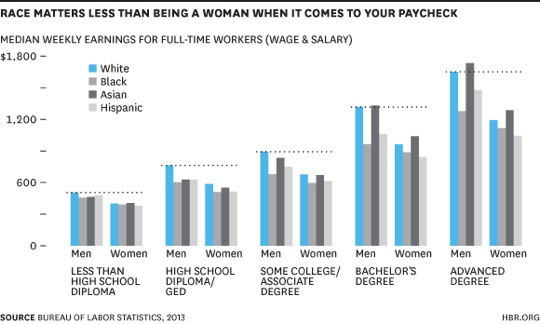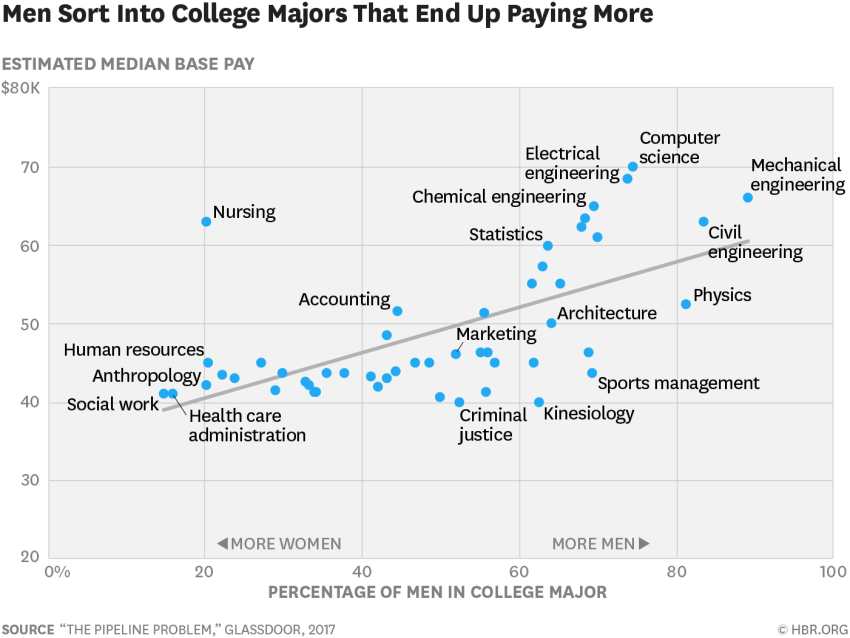Regionomics: Income Inequality

You may have heard the news – U.S. Women’s Soccer players will now make the same salary as the U.S. Men’s Soccer players. In a multimillion-dollar payout, the women’s team received compensation for years’ worth of unequal pay and a promise to equalize it. Does this signify the national wage gap has closed? Not really. On average, women still only make about 80 cents for every man’s dollar. That essentially means women are working the last few months of the year for free. Could we say the closed gap for these soccer players means we are making progress? Sure, but the gap has only closed about 2% in the last 20 years.
So, what can we do? Makenna Laser, Manager of Business Services & Communications at Firelands Forward, and Alissa Fisher, Coordinator for the Regional Incubator for Sustainability & Entrepreneurship (RISE), share their thoughts and other data on the subject.
Makenna:
In 2019, women represented 45% of all hours worked in the Northeast Ohio Region. Through data from Team Neo (Northeast Ohio), we see that the labor force participation rate among women has been rising since 1948. While the labor force participation rate has remained strong over the years, the wage gap remains. Do you see the issue here? Alissa, I think it’s time we dive into the wage gap.

Alissa:
In Ohio, women earn 78 cents for every man’s $1. Working women earn an estimated 23% less than working men in Northeast Ohio. More and more women are joining the workforce. More women are starting businesses. More women are taking on those roles that were traditionally held by men. Why haven’t we seen more progress on the gap?
Is it based off levels of education? Some say so, but according to the U.S. Bureau of Labor Statistics, the average weekly income per job type is still higher for men than women. From this graph from Harvard Business Review, you can see race and gender per education level and level of average weekly income. Despite having the same level of education, women are still being paid less. What can we point to? Is it because a higher number of women are gravitating toward college majors that typically lead to lower paying jobs? The sheer number of women in lower paying jobs is so great that it contributes to the wage gap?

take a look at the graph below from the Harvard Business Review. Women gravitate towards college majors that lead to low-paying jobs. Social work, Human Resources, and Health Care Administration to name a few examples. Look at the right end of the graph that reflects the college majors that lead to higher paying jobs. You’ll notice that it is predominately men taking the lead in these industries. Civil Engineering, Computer Science, and Statistics are prime examples of this.

So, as we notice this difference in pathways chosen by males and females, we ask the question “Why?”
Makenna:
Women may be choosing these careers because they are shown at a young age by their guardians, teachers, and peers that boys are better at math and science fields, which are typically higher paying, than girls. One study from the American Educational Research Association showed when teachers were asked to evaluate a boy and a girl with the same performance on a math test, most teachers felt the boy had more mathematical ability than the girl, despite having the same performance. This shows that certain biases exist that affect women’s choices.
Alissa:
It’s not only those women are pushed toward certain career choices by others, but they may be considering careers that allow them to easily balance family and work. They are choosing jobs that allow them more time with family. According to the U.S Bureau of Labor Statistics, mothers tend to do more household activities than fathers with the same employment status (full-time or part-time). In this opinion piece, Lisa Chow describes how she chose her career based on a desire to live a more fulfilled life not because she wanted a high wage. Considering all these details, what can businesses do to help decrease the gap?
Makenna:
Did you know that only 16% of Americans think companies are doing enough to close the gender wage gap? That’s what is reflected in the Equal Pay 2018 Survey. So, what can companies do to be more proactive in their efforts? There are many options available for businesses to reflect on the wage gap present in their business. It could be as simple as utilizing your payroll and reporting systems to review your staff’s salaries and ensure that your business aligns with the market standards. It is important to uncover the biases within your pay scale. Why is this important? Equal/fair pay is essential to creating the ultimate work environment that employees feel welcomed and appreciated in. According to this article, there are four key steps for businesses to reevaluate their pay.
- Conduct a pay audit – Only 26% of U.S. companies track differences in salary
- Ensure that hiring and promotions are fair – Only 21% of U.S. companies get gender targets for promotions
- Make sure women have equal opportunities for advancement – Women are still promoted more slowly and paid less than men
- Make it a norm for women to negotiate – When women negotiate, they are seen as “too aggressive”
Alissa:
There are more reasons than education level and job choice that contribute to the gap. We barely touched the surface of bias and sexism that still exists today. It will take work and acknowledgment of the differences in treatment women and men receive. If companies can be proactive and take these steps toward equality, we will see more than a change in the gap, but a change in how women are viewed. Prestige and power have typically been male traits, but women have them, too.
Firelands Forward: 247 Columbus Avenue, Sandusky, OH, United States, Ohio
